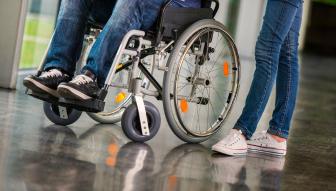
The demand for batteries will grow more than tenfold from 2015 to 2020, especially in response to the increasing use of electric transport and renewable energy. Business Finland has launched Batteries from Finland, a two-year activation programme for the battery sector to get Finland into the European and global battery networks.
Asia produces 80 per cent of the world’s batteries, especially primary batteries. Europe, too, has versatile expertise in battery technologies, and Maroš Šefčovič, Vice President of the European Commission in charge of Energy Union, encourages operators to develop safer batteries with longer lifetime. He emphasises the need to further develop the European batter expertise.
Finland has some of the raw materials and chemicals needed in the manufacturing of batteries. Now the goal is to master the higher value part of the chain, including the manufacturing and developing of battery cells. Finland will also invest in battery recycling.
“Finland has what it takes to build a significant battery cluster for raising added value in Finland. We can provide a unique combination of raw materials, processing and energy expertise in a reasonably-sized geographical area,” Minister of Economic Affairs Mika Lintilä says.
“Finland wants to be more than just the producer of raw materials. Our companies have competitive concepts and know-how throughout the value chain. The market is booming, and our primary objective is to get a slice of the new market, not to compete with existing operators. Business Finland sees here a great opportunity for Finland,” says Director-General Pekka Soini from Business Finland.
Finland is an attractive place for mining investments
The growing battery manufacturing sector needs new mining capacity, since at the moment there is not enough minerals to meet the rapidly growing demands, even with recycling. Finland is an attractive place for international mining investments.
“Finland has unique reserves of raw materials and strong geological and mining expertise. Finland is attractive for mining due to its good operating environment and one of the world’s most comprehensive geological databases. We have high levels of expertise in chemistry and material research, including analysis of global raw material chains. Finland has excellent opportunities to become a leading country in the European battery market,” says Director-General Mika Nykänen from the Geological Survey of Finland.
Transport and renewable energy drive battery market growth
Electric transport is a major contributor to the growth of the battery market. Emissions reduction targets increase the demand for electric cars, buses, bicycles and scooters, which are now available at more competitive prices. Many major cities have already announced plans to restrict the use of internal combustion engine cars in their city centres. Ferry transport is also going electric, followed by mining and forestry machines.
Another factor contributing to the battery market growth is grid-connected batteries. A problem with the renewable wind and solar energy is that energy is produced when the wind blows or the sun shine, but not necessarily at times when energy is needed.
“Batteries are increasingly used to replace peak-load power stations. Power stations have been necessary to cover peak load, but in the future it will be possible to deploy energy storage to replace at least some new power stations. Similarly, households, too, can use batteries and store solar energy, for example,” says Head of Industry, Cleantech & Bioeconomy Vesa Koivisto from Business Finland.
“From the perspective of sustainable development, battery recycling will be a key sector for development in the future. Recycling can also mean new second-life applications for batteries: electric car batteries, for example, could be re-used for home energy storage,” Koivisto says.
Batteries from Finland
Business Finland aims to accelerate the construction of a national battery ecosystem. The activities aim to contribute to improving the Finnish knowledge base and increasing Finland’s international competitiveness throughout the value chain from raw materials and battery cell manufacturing to various battery-related applications and services.
“Our companies have competitive concepts and know-how throughout the value chain. We have already a national knowledge base, thanks to Business Finland’s earlier innovation programmes promoting electric vehicles and green mining, among others. This base will serve as an excellent foundation for a new battery ecosystem,” says Director-General Pekka Soini from Business Finland.
“Products, services and business concepts related to electric transport and energy storage are developing at a rapid pace, and the expanding market naturally creates a lot of interest.
Business Finland is creating operator networks to access the European battery network and through it the global network. We also aim to attract foreign battery investments into Finland. In February, Business Finland invited 70 industry representatives to develop together the future of battery technologies in Finland. The event was extremely well received. Next, Business Finland and the companies involved will be planning measures to develop the battery market.




